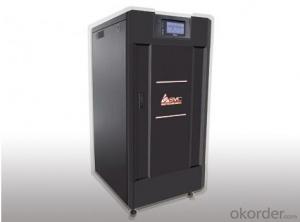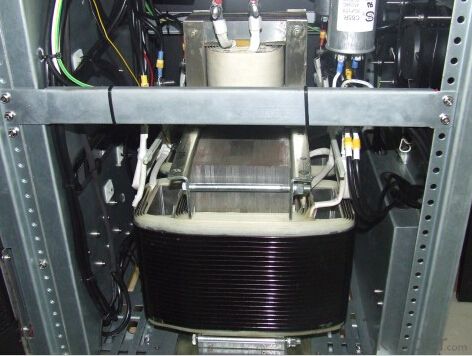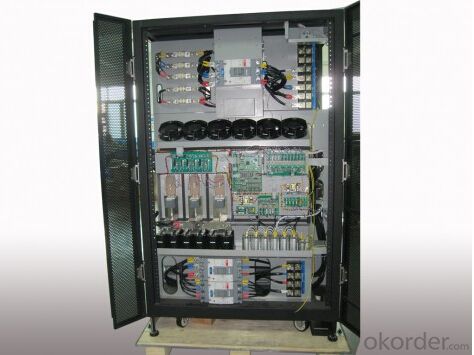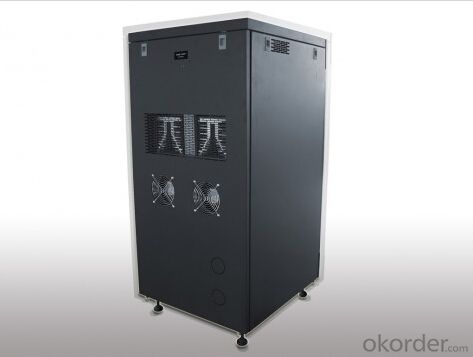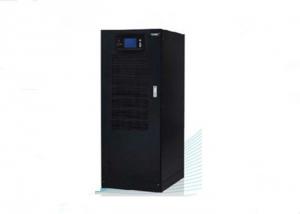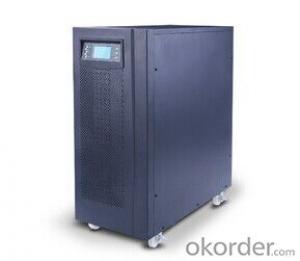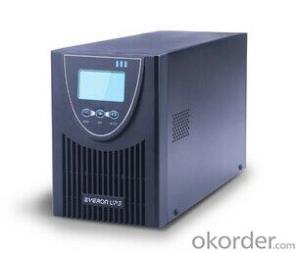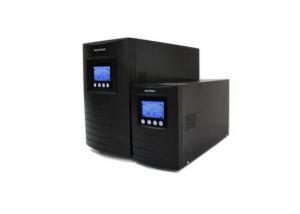80VA Online UPS Low Frequency 3 in 3 Out UPS
- Loading Port:
- Guangzhou
- Payment Terms:
- TT OR LC
- Min Order Qty:
- 30 unit
- Supply Capability:
- 300000 unit/month
OKorder Service Pledge
OKorder Financial Service
You Might Also Like
20~30KVA Online Low Frequency 3 in 3 Out Double Conversion UPS
| MODEL | GP33-20-30 | GP33-40-60 | GP33-80-100 | GP33-120-200 |
| Capacity | 20~30KVA | 40~60KVA | 80~100KVA | 120~200KVA |
| Type | Tower | |||
| INPUT | ||||
| Voltage | (208 or 380 or 400 or 480 Vac) ± 20% / 5 wires (3 Lines + Neutral + Ground) | |||
| Frequency | 50 or 60Hz ± 10% Autosensing | |||
| Power factor | 0.98 | |||
| Filter | EMI, RFI | |||
| Dual input | Optional | |||
| OUTPUT | ||||
| Voltage | (208 or 380 or 400 or 480 Vac) ± 20% / 5 wires (3 Lines + Neutral + Ground) | |||
| Frequency | 50 or 60Hz ± 0.1% | |||
| Effciency | AC / AC > 92% | |||
| Trandfer time | 0 ms | |||
| Wave form | Sine wave | |||
| Power factor | 0.9 | |||
| Voltage T.H.D. | < 2% with linear load< td=""> | |||
| Crest factor | 3 : 1 | |||
| Technology | True on-line double conversion controlled by microcontroller | |||
| Overload recovery | Automatically transfer to UPS mode | |||
| Isolation transformer | Inverter mode ( bypass mode is optional ) | |||
| Parallel connection | Parallel connection function is ready (extra PCB is not required ) | |||
| BATTERY | ||||
| Battery type | VRLA ( Valve Regulated Lead Acid ), not included | |||
| DC voltage | 384 Vac | 480 Vdc | ||
| Charging time | 4 hours up to 90% | |||
| Battery detection | self-detect, transfer to battery mode adjustable | |||
| PROTECTION | ||||
Lighting and transient protection | Hotswappable lightning and transient surge suppressor (In:10 Kamp, Up:1.5 Kv, I max : 20 K amp. ) | |||
| Hardware protection | output breaker, battery breaker, bypass breaker; DC fuse, fan, redundant power supply; temperature sensor, EPO (Emergency Power Off), audible alarms etc. | |||
| Software protection | Discharging batteries, battery charge working mode, inverter working mode, emergency power off, manual shutdown, bypass SCR failure, bypass sequence failure, bypass over the lilit, critical overload, batteries exhaustion, low or high output voltage, DC fuse open, 5v power supply failure, 13.5V power supply failure, inverter overvoltage, 200% overload on each line, transfer failure, inverter voltage out of range, over voltage between neutral and ground, UPS on bypass mode, bypass frequency out opf range. | |||
| Bypass | Solid state | |||
| Overload | 125% for 10 min, 150% for 30 sec, 1000% for 16 millisencond. | |||
| EPO | EPO local and / or remote | |||
| Display | LCD, touch screen | |||
| LED's diagram | Included | |||
| Communication | RS232 intellident Slot, modem, SNMP(RJ45) (SNMP adaptive Software is supplied by the producer) | |||
| ENVIRONMENT | ||||
| Elevation | 1.700 m.o.s. 1 without derrating | |||
Temperature & noise | 0℃~40℃ / < 60db @ 1.5m.< td=""> | |||
| Humidity | Non condensate | |||
| PHYSICAL | ||||
| Dimension(mm) | 520*1600*550 | 520*1670*780 | 1000*1860*870 | Ask for information |
Weight (without batteries) | 150 | 300 | 600 | |

1. Wide range of input voltage
The UPS can offer normal and stable service voltage under its input voltage range. When the input voltage is out of its range the machine will switch to battery mode automatically to keep the output power in order to protect the equipment, such as computers, ensure they will not be damaged by the over high or over low voltage, users can continue the operation of equipment for a while or save the data on computers while the power network is abnormal.
2. Wide range of AVR(Automatic voltage regulation)
In the product’s input voltage range and under 3 steps of intelligent AVR function, it can provide a stable output voltage.
3. Automatic self detection when UPS on(LED).
Before the UPS on, red, yellow, blue LED will light up two times by cycle turns, after self detection UPS switch to AC mode/battery mode or working mode.
4. Silence function
In the "battery mode", shortly press the switch to turn off the buzzer. But the battery is about to run out or the load is too heavy, the buzzer sound cannot be muted.
5. Overload protection
In the battery mode, output voltage turn down correspondingly when it is overload, after the capacity of load is lower than the rated power then output voltage will back to rated value, it ensures the UPS will not shut down by abrupt overload which caused by surging current during the computer is working and other equipment is added.
6. Short circuit protection
When the mis-operation caused the load short circuit or computer failure (such as power tube breakdown of switch) cause short circuit, the UPS will shutdown automatically for protection.
7. The low current switch
This UPS adopts low current switch to extend the service life which is longer than conventional battery and high current switch in AC current path.
8. Automatic charging
There are two charging mode, charging time is faster than ordinary charging mode, higher efficiency, and greatly prolonging the service life of the battery.
9. With a bypass output
Independent bypass output socket for external printers or scanners of computer peripherals, with surge protection of the load.
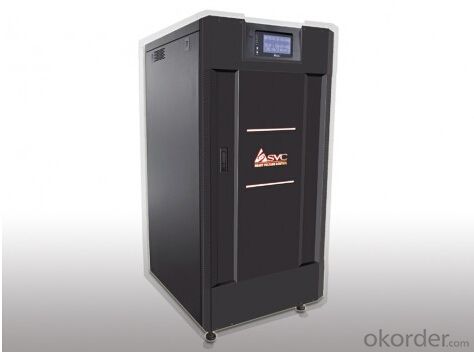
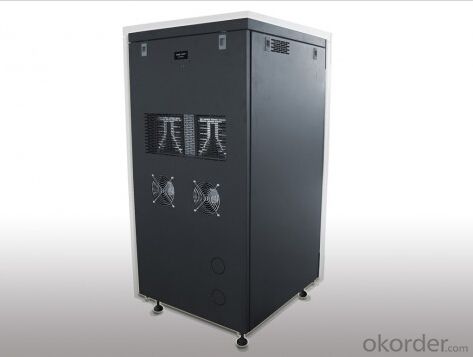
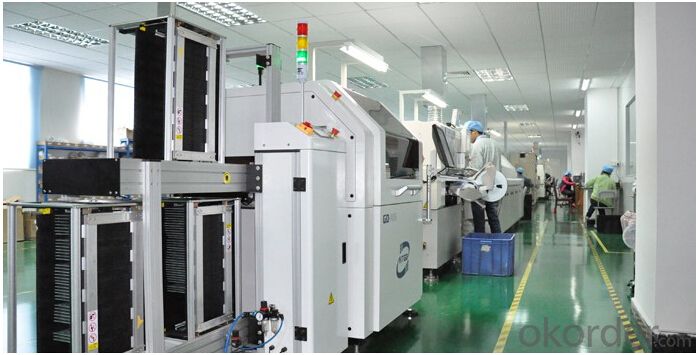
Warranty
provides a 1~3 year limited warranty (“Warranty”) against defects in materials and workmanship for its Uninterruptible power supply, Power inverter/chargers, Solar charge controllers, Battery Products (“Product”).
The term of this Warranty begins on the Product(s) initial purchase date, or the date of receipt of the Product(s) by the end user, whichever is later. This must be indicated on the invoice, bill of sale, and/or warranty registration card submitted to us. This Warranty applies to the original MUST-Solar Product purchaser, and is transferable only if the Product remains installed in the original use location.
FAQ
1. Where can I buy your products?
You could find our products from dealers or contact our sales team directly. We will provide you with detailed services.
2. How to contact us?
Contact details can be found from website www.okorder.com to contact us. We look forward to providing you with professional services.
3. What is the application field of your products?
Our current GW1500~4600-SS series and GW3000~4600-DS, with the flexible expansion ability and allocation capability, can be used in the small photovoltaic (PV) grid power generation systems of family units as well as the commercial photovoltaic system such as BIPV, BAPV and etc.
4. What kinds of modules do your inventers support?
Our inventers support most of mainstream components and modules in the market. Should you require more details, please do not hesitate to contact our technical personnel.
- Q: Can a solar inverter be used with a solar-powered CCTV system?
- Yes, a solar inverter can be used with a solar-powered CCTV system. A solar inverter is responsible for converting the direct current (DC) produced by solar panels into alternating current (AC) that can be used to power electrical devices. In the case of a solar-powered CCTV system, the solar inverter can convert the DC power generated by the solar panels into the AC power required to run the CCTV system, ensuring it functions properly.
- Q: Can a solar inverter be used with different monitoring platforms?
- Yes, a solar inverter can typically be used with different monitoring platforms. Most modern solar inverters are designed to be compatible with various monitoring platforms, allowing users to choose the one that suits their needs and preferences. This flexibility enables users to monitor and manage their solar energy production and consumption effectively, regardless of the specific monitoring platform they choose to use.
- Q: What is the difference between low voltage grid connection and medium voltage grid connection?
- For photovoltaic power plants when the power system accidents or disturbances caused by photovoltaic power plant grid voltage drop, in a certain voltage drop range and time interval, the photovoltaic power plant can ensure that non-off-line continuous operation.
- Q: Does a solar inverter require any additional cooling or ventilation?
- Yes, a solar inverter typically requires additional cooling or ventilation to maintain its optimal operating temperature and prevent overheating. This is because solar inverters convert DC power from solar panels into AC power, a process that generates heat. Adequate cooling or ventilation systems help dissipate this heat and ensure the inverter operates efficiently and reliably.
- Q: Can a solar inverter be used with a solar-powered outdoor lighting system?
- Yes, a solar inverter can be used with a solar-powered outdoor lighting system. A solar inverter is responsible for converting the direct current (DC) generated by solar panels into alternating current (AC) that can be used to power electrical devices. In the case of a solar-powered outdoor lighting system, the solar inverter can be used to convert the DC power generated by the solar panels into AC power that can be used to light up the outdoor lights during nighttime.
- Q: Can a solar inverter be used with a solar-powered disaster relief system?
- Yes, a solar inverter can be used with a solar-powered disaster relief system. A solar inverter is an essential component that converts the direct current (DC) generated by the solar panels into alternating current (AC), which is the form of electricity used in most appliances and the electrical grid. By using a solar inverter, the solar-powered disaster relief system can efficiently convert and utilize solar energy to power various devices and equipment needed in disaster relief efforts.
- Q: How do you troubleshoot common issues with a solar inverter?
- To troubleshoot common issues with a solar inverter, start by checking the connections and ensuring they are secure and undamaged. Verify that the DC input and AC output are receiving power properly. If there is no power, check the circuit breakers and fuses. It's also important to inspect the solar panels for any shading or debris that may affect their performance. Additionally, reviewing the error codes or indicators on the inverter can provide valuable insights into the problem. If the issue persists, consulting the manufacturer's manual or contacting a professional solar technician would be recommended for further troubleshooting and repair.
- Q: Can a solar inverter be used in a smart grid system?
- Yes, a solar inverter can be used in a smart grid system. In fact, solar inverters play a crucial role in integrating renewable energy sources, such as solar power, into a smart grid. They convert the direct current (DC) generated by solar panels into alternating current (AC) that can be used to power homes and businesses. Additionally, smart grid systems utilize advanced communication and control technologies to manage and optimize the flow of electricity, enabling solar inverters to interact with the grid and provide real-time data on energy generation and consumption. This integration helps increase the efficiency, reliability, and overall performance of the smart grid system.
- Q: How does a solar inverter handle excess power production?
- A solar inverter handles excess power production by converting the surplus electricity generated by the solar panels into AC power, which can then be either used in the household or fed back into the grid for others to use.
- Q: Can a solar inverter be used with concentrated photovoltaic systems?
- Yes, a solar inverter can be used with concentrated photovoltaic (CPV) systems. However, the inverter used for CPV systems may differ from the ones used for traditional photovoltaic systems. CPV systems use lenses or mirrors to concentrate sunlight onto highly efficient solar cells, which generate DC power. This DC power is converted into AC power by the inverter, enabling it to be used for various applications or fed into the grid. Therefore, a specialized inverter designed to handle the unique characteristics and high levels of DC power output of CPV systems is required.
Send your message to us
80VA Online UPS Low Frequency 3 in 3 Out UPS
- Loading Port:
- Guangzhou
- Payment Terms:
- TT OR LC
- Min Order Qty:
- 30 unit
- Supply Capability:
- 300000 unit/month
OKorder Service Pledge
OKorder Financial Service
Similar products
Hot products
Hot Searches
Related keywords
